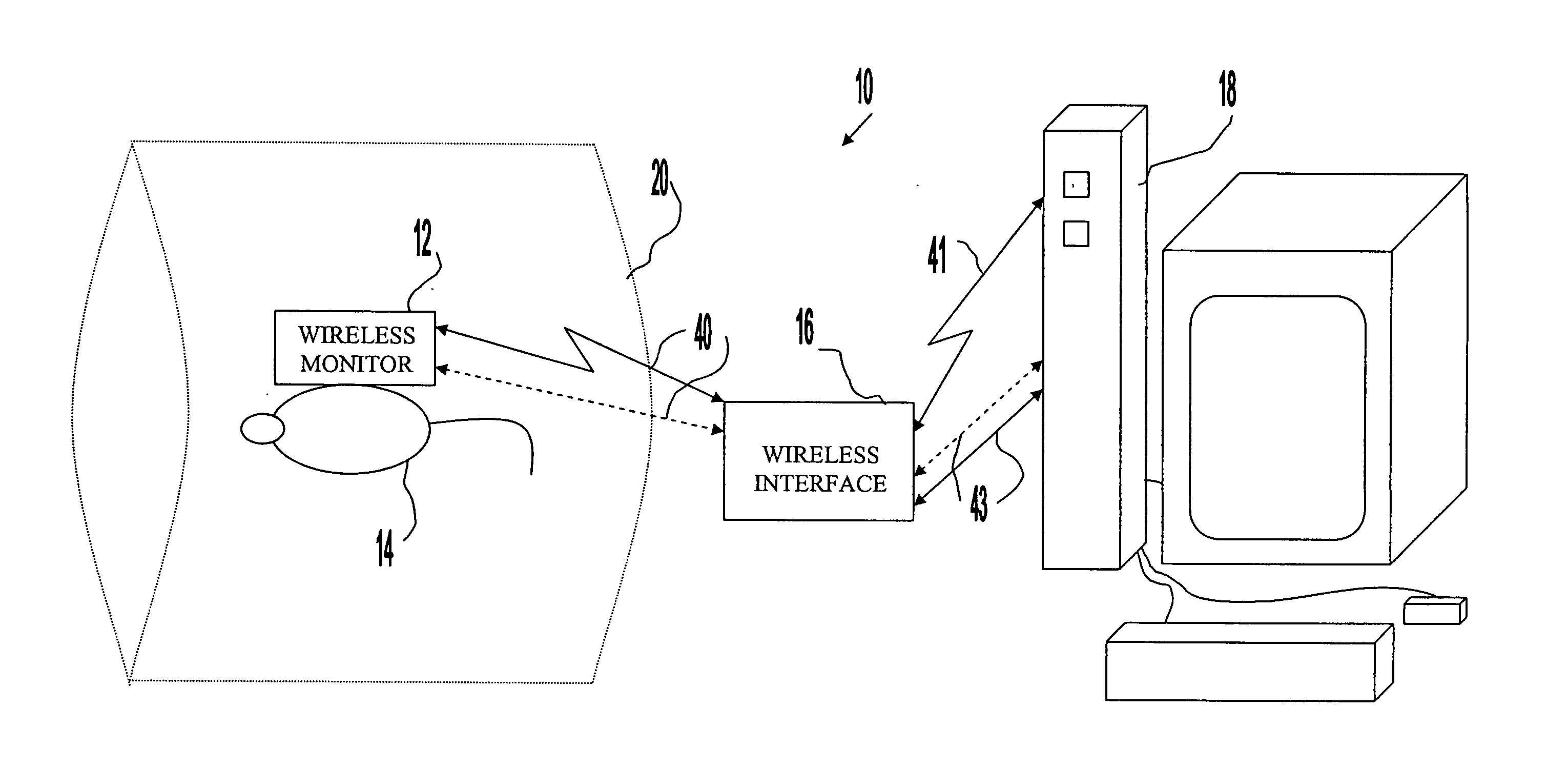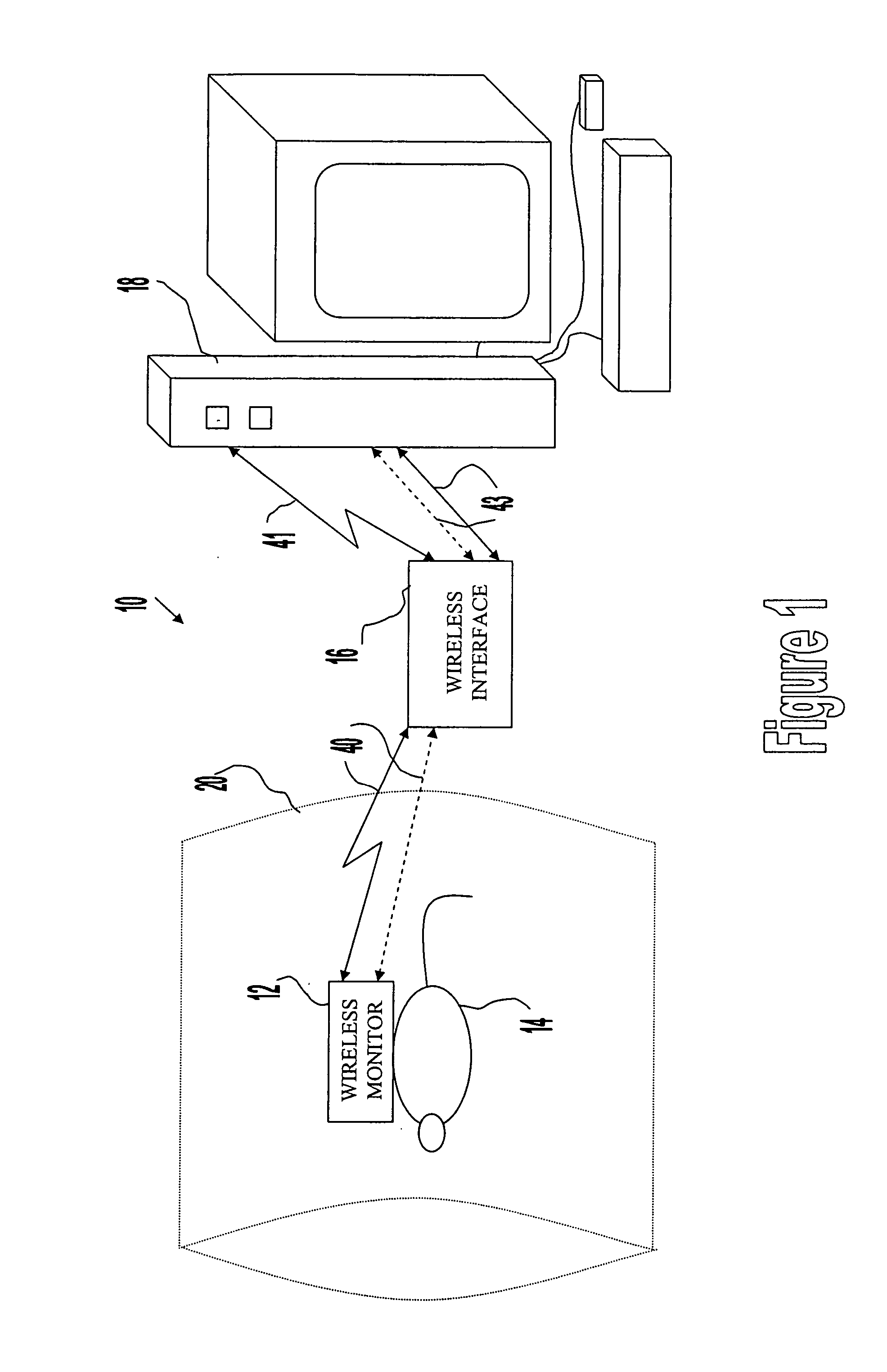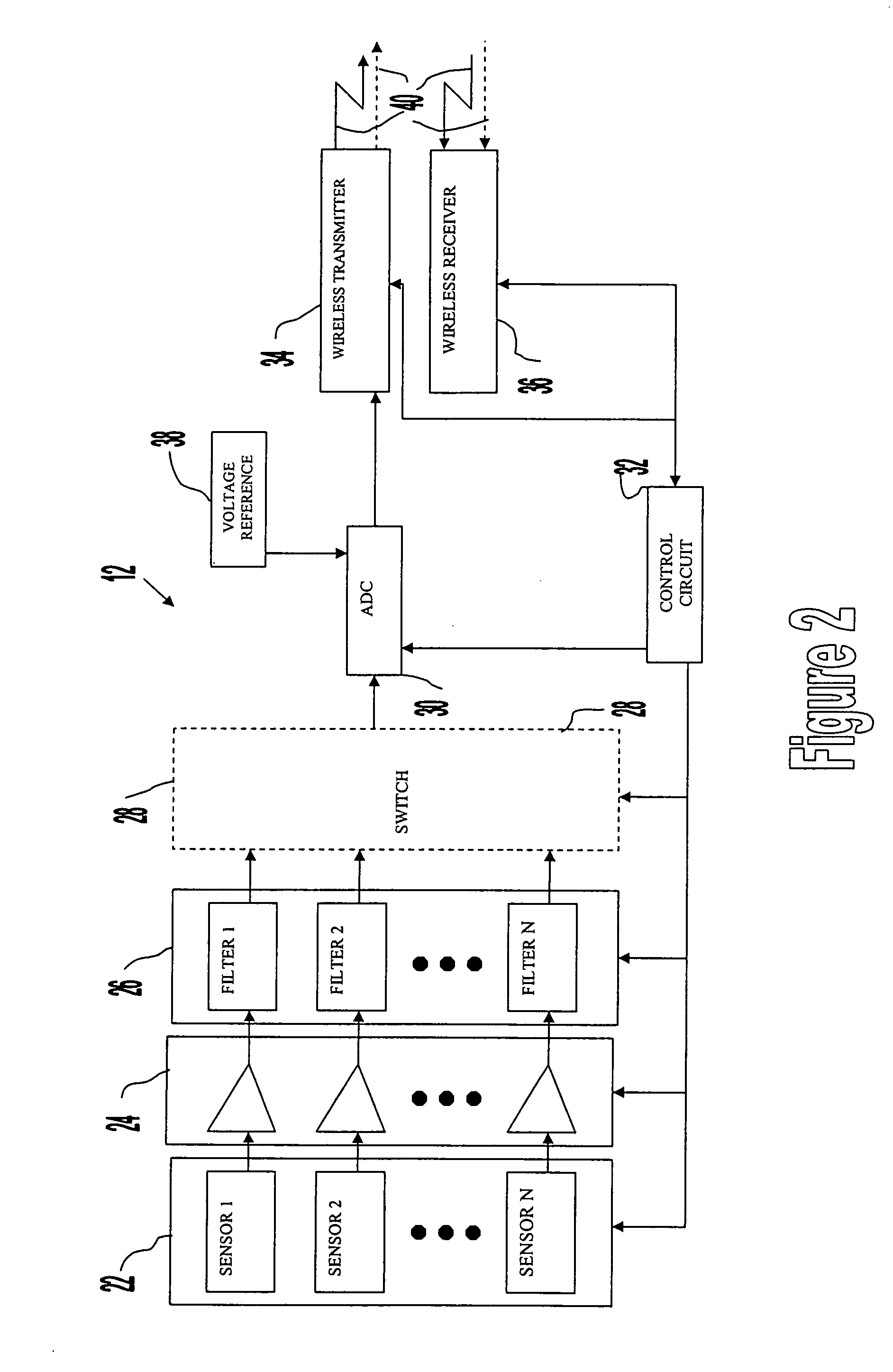Method and apparatus for wireless monitoring of subjects within a magnetic field
a wireless monitoring and magnetic field technology, applied in the field of physiological parameters monitoring, can solve the problems of insufficient monitoring of respiration, burns to the subject and shadows in the images, and inability to provide direct information on the adequacy of the monitoring method
- Summary
- Abstract
- Description
- Claims
- Application Information
AI Technical Summary
Benefits of technology
Problems solved by technology
Method used
Image
Examples
Embodiment Construction
[0034] A wireless monitoring system 10 formed in accordance with the present invention is shown in FIG. 1 and preferably operates by obtaining signals from sensors, such as electrocardiogram (EKG or ECG) electrodes and / or a thermistor. Ambient radio frequency noise is preferably eliminated by filters in a wireless monitor 10. The wireless monitor 10 is preferably strapped, secured, and / or mounted on a subject, such as a conscious human or rat 14, which permits the subject to move about substantially freely, normally, naturally, and unencumbered.
[0035] The filtered signal is preferably converted from analog to digital form in the wireless monitor 10 and transmitted by a wireless transmitter therein to a receiver in a wireless interface 16, which is preferably about fifty (50) feet away from the monitor 12. The wireless interface 16 preferably converts information in the signal received from the wireless monitor 12 to a form that is compatible with a personal computer 18, and retrans...
PUM
 Login to View More
Login to View More Abstract
Description
Claims
Application Information
 Login to View More
Login to View More - R&D
- Intellectual Property
- Life Sciences
- Materials
- Tech Scout
- Unparalleled Data Quality
- Higher Quality Content
- 60% Fewer Hallucinations
Browse by: Latest US Patents, China's latest patents, Technical Efficacy Thesaurus, Application Domain, Technology Topic, Popular Technical Reports.
© 2025 PatSnap. All rights reserved.Legal|Privacy policy|Modern Slavery Act Transparency Statement|Sitemap|About US| Contact US: help@patsnap.com



